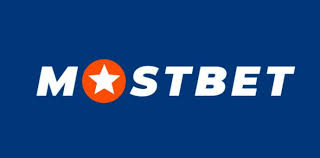
Understanding Betting Odds: How to Read Betting Odds
Betting odds might seem perplexing at first glance, especially with the various formats used across different sports and bookmakers. However, taking the time to learn how to read betting odds is crucial for successful wagering and making informed decisions. In this guide, we will explore the different types of betting odds, how to interpret them, and the underlying concepts that can enhance your betting skills. For more insights, feel free to visit How to read betting odds 2025 https://mostbet-turkey1.com/.
Types of Betting Odds
Betting odds can be presented in several formats, with the most common being American odds, Decimal odds, and Fractional odds. Understanding these formats is the first step in becoming a proficient bettor.
1. American Odds
Also known as moneyline odds, American odds use a positive or negative integer to represent the potential profit on a bet. If the odds are positive, they indicate how much profit you could make on a $100 bet. Conversely, negative odds show how much you need to bet to win $100. For example:
- +200: A $100 bet would yield a profit of $200 if successful.
- -150: You would need to bet $150 to potentially win $100.
Understanding this format is particularly important in the U.S. sports betting market, where it’s commonly used.
2. Decimal Odds
Decimal odds are a straightforward way to express the return on a bet. This format is popular in Europe and Canada. The decimal number represents the total payout, including the initial stake. For example, if the odds are 3.00, a $10 bet would yield $30 in total if successful ($20 profit plus the original $10 stake).
This format makes it easy to calculate potential returns and is often favored by recreational bettors because of its simplicity.
3. Fractional Odds
Commonly used in the UK, fractional odds depict the potential profit relative to the stake. A bet with odds of 5/1 means that for every $1 wagered, you can win $5. For a $10 bet at those odds, the total return would be $60 ($50 profit plus the original $10 stake).
Fractional odds are often presented in terms of fractions like 1/2, 2/5, or 5/1, and they may take a bit more practice to become comfortable with than the other formats.
How to Read Betting Odds

Now that we have covered the basics of the different types of odds, let’s dive into how to read and interpret them more effectively.
Converting Odds
Being able to convert between different odds formats can be beneficial when comparing bookmakers. For instance, you may find that one bookmaker offers better decimal odds than another for the same event. Converting them is relatively simple:
- Decimal to American: If the decimal odds are greater than 2.00, subtract 1 and multiply by 100 to get positive American odds. If less than 2.00, multiply by -100 and divide by (1 – decimal odds).
- American to Decimal: For positive American odds, divide by 100 and add 1. For negative American odds, divide -100 by odds and add 1.
- Fractional to Decimal: Add the numerator to the denominator and then divide by the denominator. For example, 5/2 becomes 5 + 2 = 7, therefore, 7 ÷ 2 = 3.50 in decimal form.
Understanding Probability
Odds also represent implied probability. To find the implied probability from decimal odds, use the formula:
Implied Probability (%) = 1 / Decimal Odds × 100
For example, decimal odds of 3.00 have an implied probability of 33.33% (1 / 3.00 × 100). Understanding the implied probabilities behind betting odds helps you identify potential value bets where the likelihood of an event occurring may be higher than the odds suggest.
Value Betting
One of the crucial concepts in betting is value betting, where you identify situations in which the odds offer higher potential returns than the true probability of an event happening. To spot value bets:
- Calculate the implied probability of the betting odds.
- Assess your own estimate of the true probability based on research, statistics, and analysis.
- If your probability estimate is greater than the implied probability, you have found a value bet.
Value betting forms the backbone of long-term profitability in sports betting. It requires keen analytical skills, discipline, and a structured approach to betting.
Closing Thoughts
Learning how to read betting odds not only empowers you to make more informed decisions but also enhances your betting experience. Whether using American, Decimal, or Fractional odds, understanding the implications and probabilities can significantly influence your betting strategy.
With practice, you’ll become adept at converting odds, spotting value bets, and ultimately increasing your chances of winning. Remember, responsible betting is key, so always gamble within your means and seek to enjoy the process.